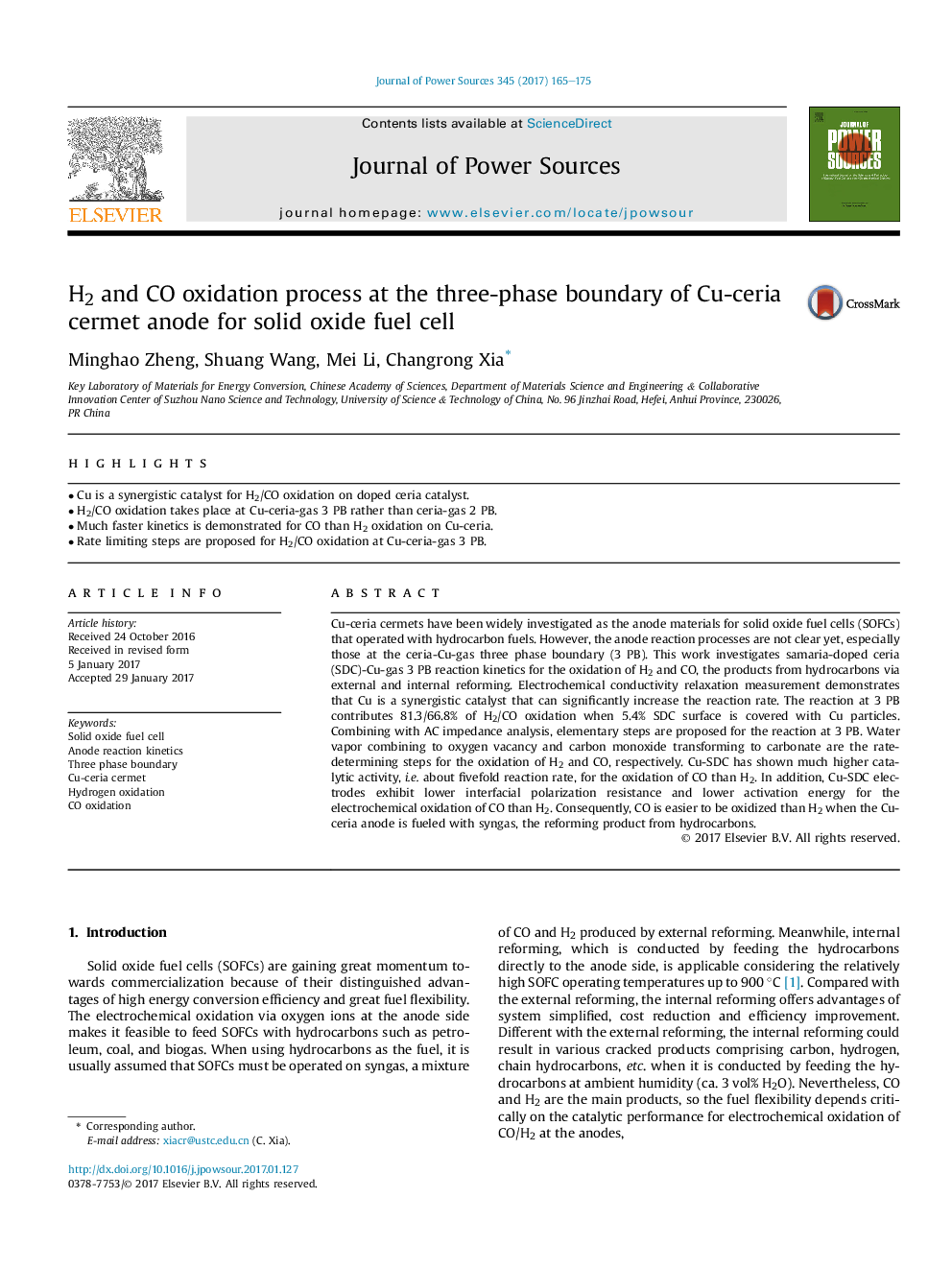| کد مقاله | کد نشریه | سال انتشار | مقاله انگلیسی | نسخه تمام متن |
|---|---|---|---|---|
| 5149602 | 1497887 | 2017 | 11 صفحه PDF | دانلود رایگان |
عنوان انگلیسی مقاله ISI
H2 and CO oxidation process at the three-phase boundary of Cu-ceria cermet anode for solid oxide fuel cell
دانلود مقاله + سفارش ترجمه
دانلود مقاله ISI انگلیسی
رایگان برای ایرانیان
کلمات کلیدی
موضوعات مرتبط
مهندسی و علوم پایه
شیمی
الکتروشیمی
پیش نمایش صفحه اول مقاله

چکیده انگلیسی
Cu-ceria cermets have been widely investigated as the anode materials for solid oxide fuel cells (SOFCs) that operated with hydrocarbon fuels. However, the anode reaction processes are not clear yet, especially those at the ceria-Cu-gas three phase boundary (3Â PB). This work investigates samaria-doped ceria (SDC)-Cu-gas 3Â PB reaction kinetics for the oxidation of H2 and CO, the products from hydrocarbons via external and internal reforming. Electrochemical conductivity relaxation measurement demonstrates that Cu is a synergistic catalyst that can significantly increase the reaction rate. The reaction at 3Â PB contributes 81.3/66.8% of H2/CO oxidation when 5.4% SDC surface is covered with Cu particles. Combining with AC impedance analysis, elementary steps are proposed for the reaction at 3Â PB. Water vapor combining to oxygen vacancy and carbon monoxide transforming to carbonate are the rate-determining steps for the oxidation of H2 and CO, respectively. Cu-SDC has shown much higher catalytic activity, i.e. about fivefold reaction rate, for the oxidation of CO than H2. In addition, Cu-SDC electrodes exhibit lower interfacial polarization resistance and lower activation energy for the electrochemical oxidation of CO than H2. Consequently, CO is easier to be oxidized than H2 when the Cu-ceria anode is fueled with syngas, the reforming product from hydrocarbons.
ناشر
Database: Elsevier - ScienceDirect (ساینس دایرکت)
Journal: Journal of Power Sources - Volume 345, 31 March 2017, Pages 165-175
Journal: Journal of Power Sources - Volume 345, 31 March 2017, Pages 165-175
نویسندگان
Minghao Zheng, Shuang Wang, Mei Li, Changrong Xia,